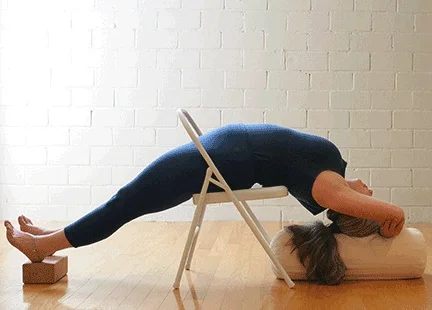Tongue-to-Shoulder Tension Relieved!
/I was lying in a backbend, supported by a chair. It had been beastly hot in Los Angeles, and Karin, my yoga teacher, had given our class a number of supported asanas to cool us down. But I was resisting: I had let my yoga practice lapse for a number of months and hadn’t been in that upside down position for a while. My throat felt taut. Trying to find the source of my discomfort, I zeroed in on my tongue. Sure enough, loosening it helped me settle into the posture. But Hyoglossal_musclewhy did my shoulders release so dramatically, just from softening my tongue? The image that came to mind was anatomical…
Read More








